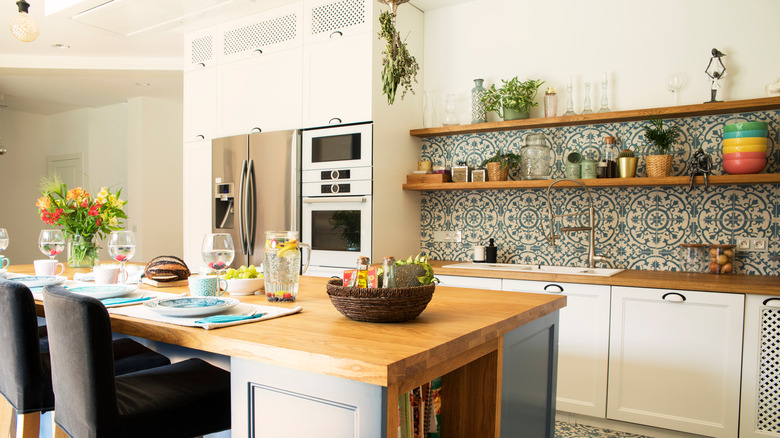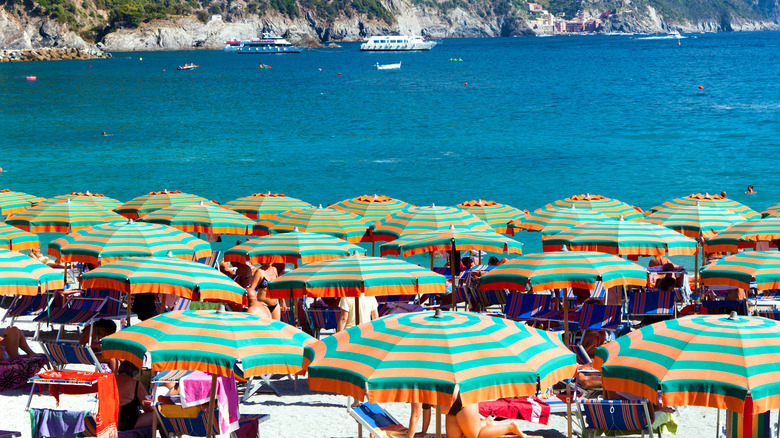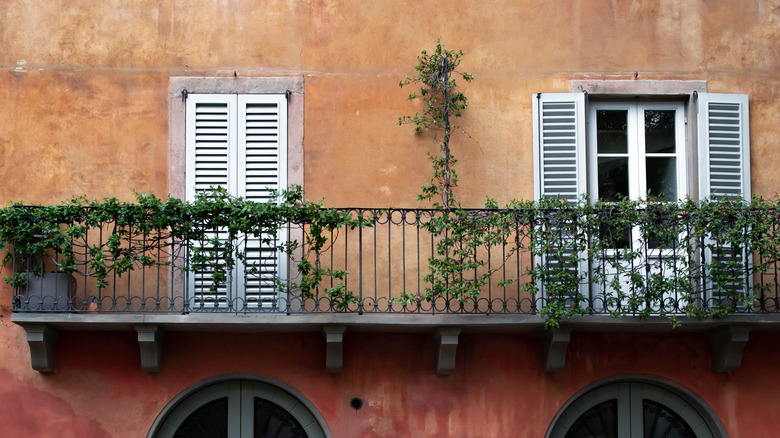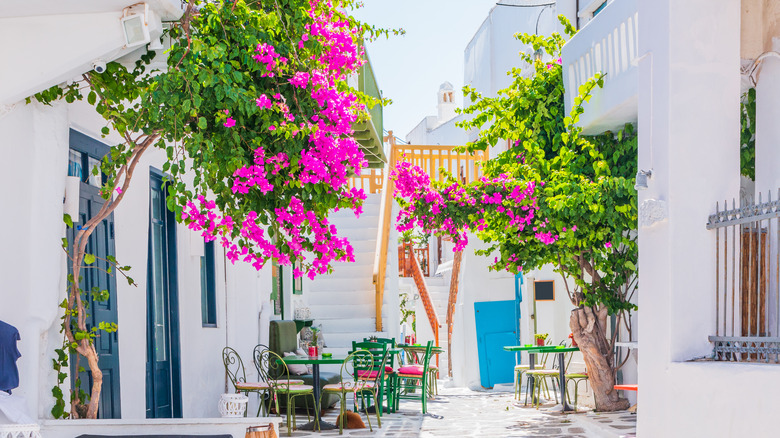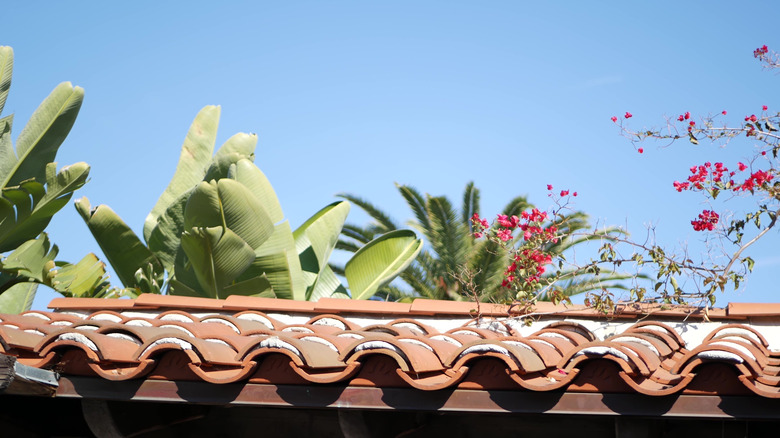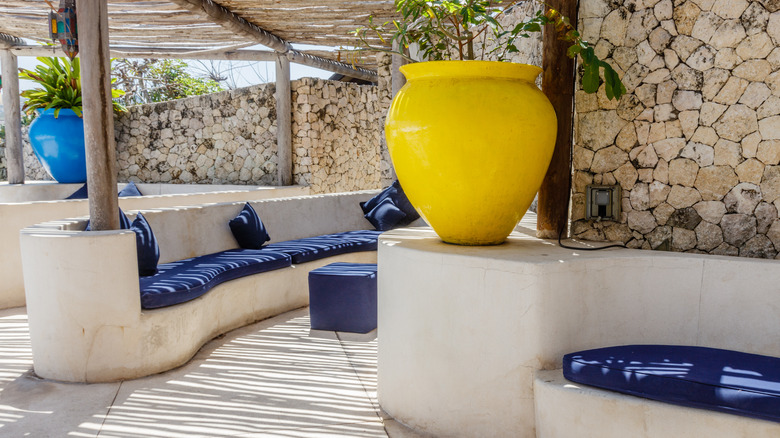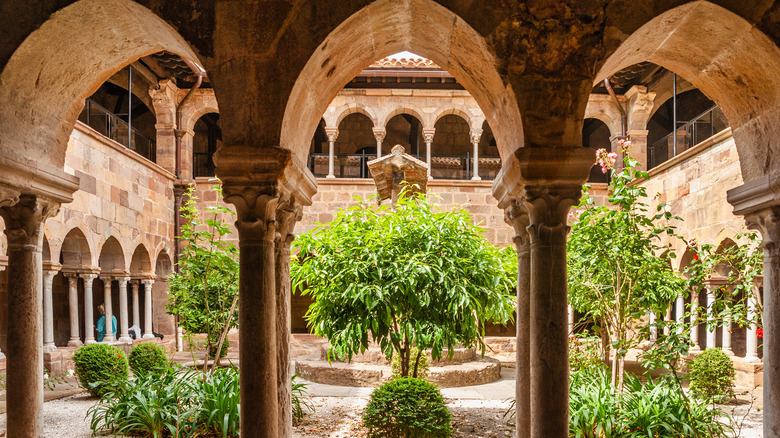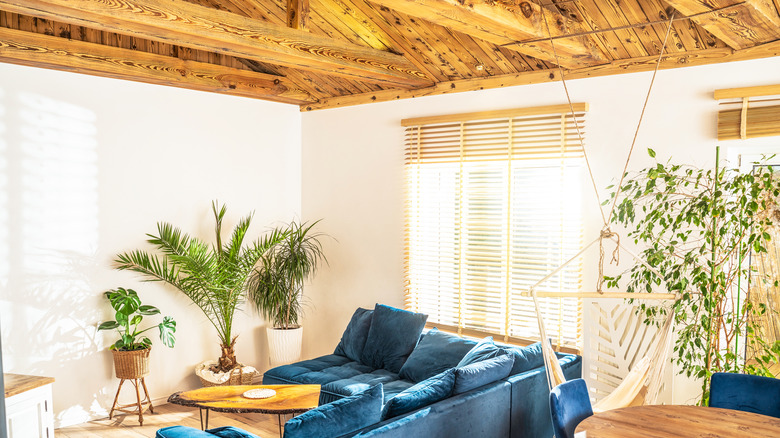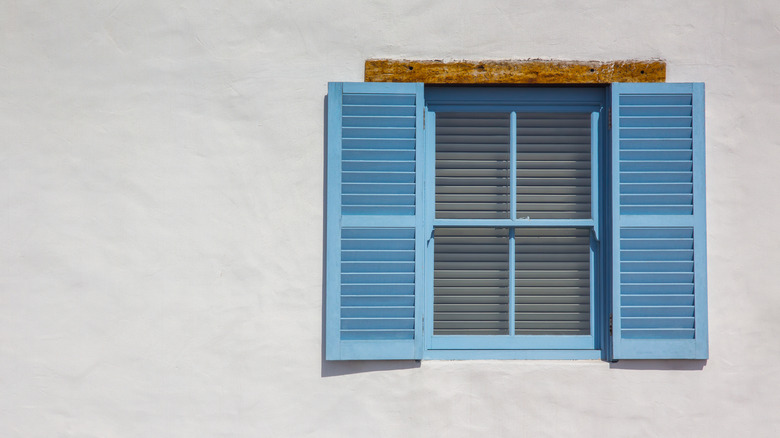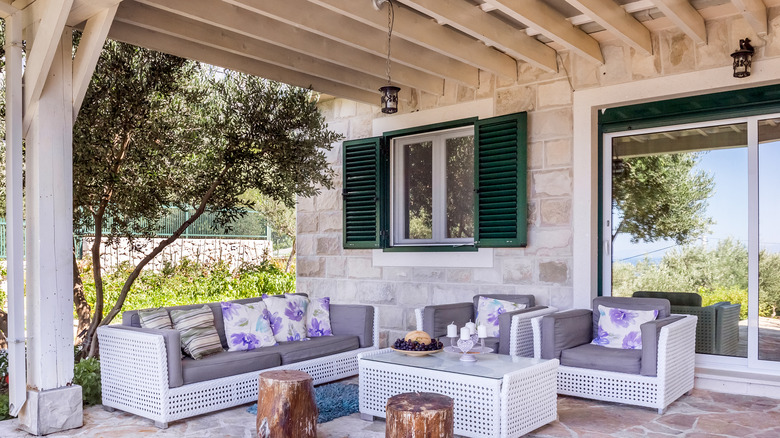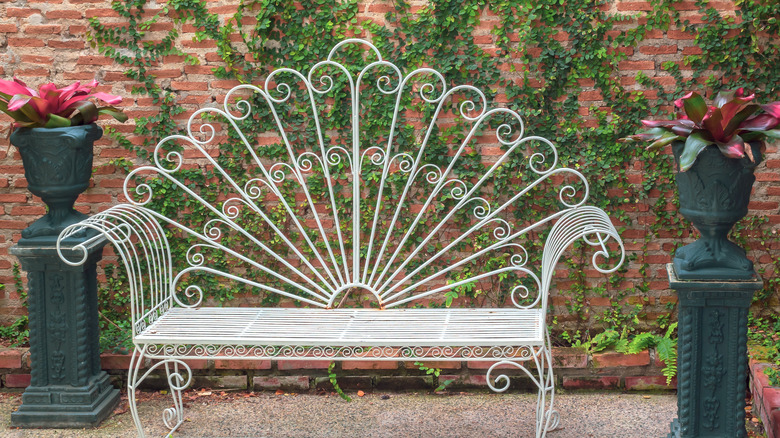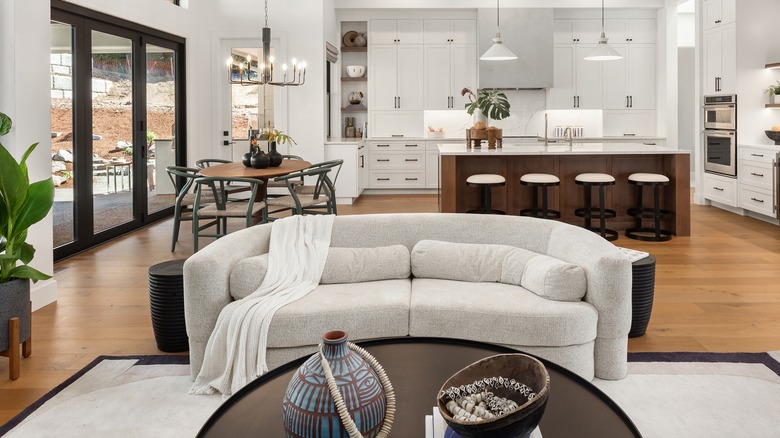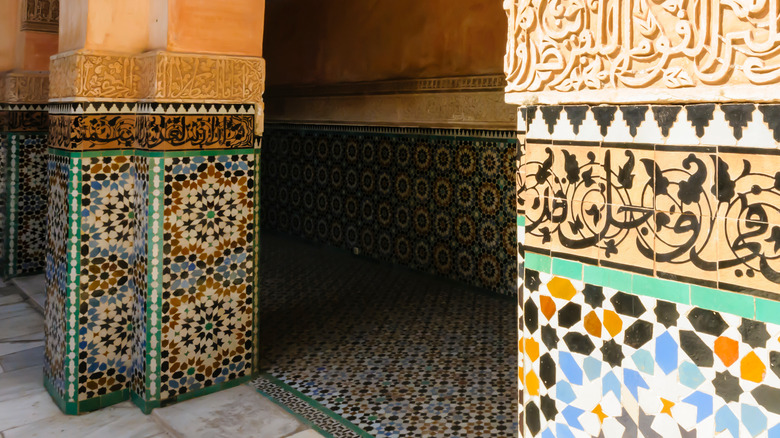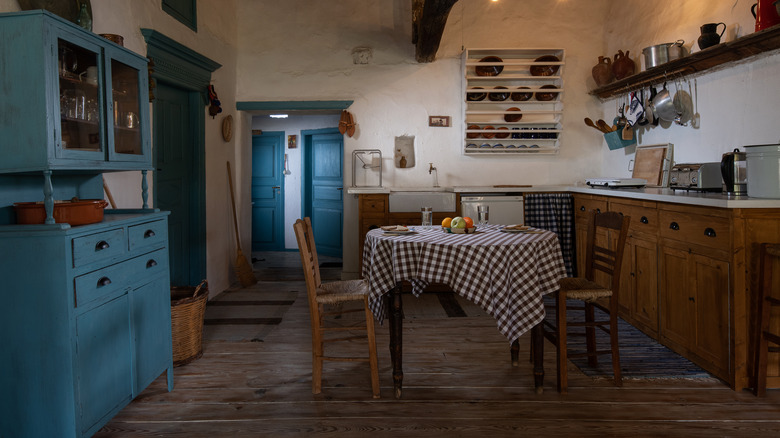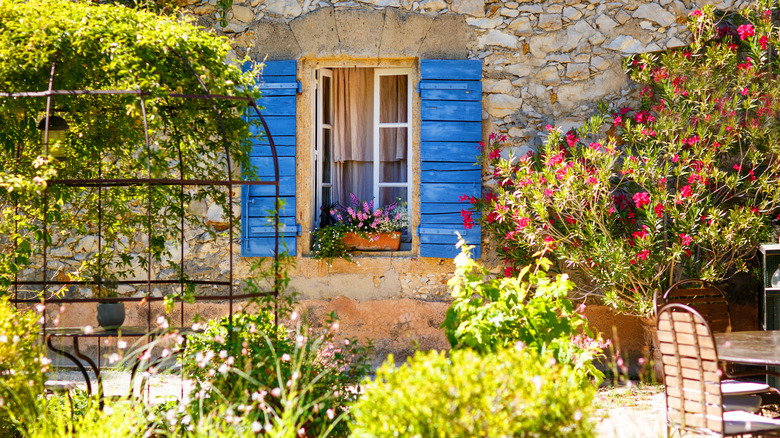The Ultimate Guide To Mediterranean Decor
With romantic character and European origins, the Mediterranean style is highly coveted. Even if your home was not built in this style, you can still decorate the interiors to match this aesthetic. According to Elle Decor, Mediterranean-style homes resemble the classic Mediterranean villas that originated in the 1920s. These homes blend Spanish and Italian influences and are especially popular in states with warmer climates like California and Florida.
Mediterranean homes are known to be simple yet elegant. They feature elements like warm woods, bright walls, and a focus on indoor-outdoor living. This decor style does not follow trends and is known to stay in style, standing the test of time. Characterized by a unified and symmetrical look, the Mediterranean style is worth the effort and investment in your home. If you love the relaxed and carefree vibe of Mediterranean living spaces, here are some decorating tips and tricks to inspire your interiors.
Mediterranean design has a rich history
Before we dive deeper into Mediterranean decor, let's understand the roots of Mediterranean design and architecture in general. As reported by The Spruce, Mediterranean architecture takes inspiration from countries bordering the Mediterranean Sea like Italy, Spain, and Portugal. As time passed, influences from countries such as France, Morocco, and Greece became recognized parts of the style.
Since this type of architecture contains an abundance of cultural influences, it goes by many names, including Spanish Colonia, Moroccan, and Mission Revival. The style's core tenants and feelings include warmth, wealth, and relaxation. These all influenced the image of a picturesque Mediterranean villa. Emphasis is placed on the natural world and connecting the home with surrounding nature. While at first only public places such as hotels and resorts utilized this architectural style, it later became popular with American architects in Florida and California. From there, the rest is history!
Stucco is a common theme in the Italian Mediterranean style
The first Mediterranean style to understand is classic Italian. There are several characteristics of Mediterranean decor that are distinctly Italian. The first characteristic is dark, wooden ceiling beams, as reported by Krome Italian Refurbishing. This element derives from the beautiful region of Tuscany. Weathered beams provide an authentic, old-world touch to any living space, and you can contrast them with modern accessories to make an eye-catching statement.
Wall texture is another primary Italian Mediterranean element. A texture used all over Italy is weathered stucco. This unique plaster finish is useable in both indoor and outdoor spaces. Usually, these walls will be a shade of white. Indoor-outdoor living in homes also appears in Italy. Terraces, patios, and courtyards offer a seamless transition from inside to outside with comfortable furniture and spaces designed for socializing. Use elements like plants, rattan furniture, and wrought-iron accents to bring your Italian Mediterranean style outdoors.
Simplicity is key in Greek Mediterranean design
Up next is the Greek Mediterranean style. Bright shades of white and blue typically come to mind when thinking about Greek homes and architecture. However, there is much more to this style. According to Dummies, Greeks traditionally like their homes to be simple and clutter-free. Their style aims to harmonize the indoors and out — much like Italian Mediterranean decor.
A top characteristic of Greek Mediterranean design is white backgrounds with deep hues of blue. These are two colors inspired by the natural color palette of the beautiful Greek islands. Some other simple ways to add a touch of Greek Mediterranean decor to your home include decorating with stone colors, using textured textiles, and bringing in rustic wooden accents. Furthermore, look for furnishings with understated and soft lines. Other elements to include are glazed pottery and colored glassware. Finally, add pops of color like tans, reds, and subtle greens.
Tiles and wrought iron dominate Spanish Mediterranean style
Next, let's explore Spanish Mediterranean design. This is a distinct style that shares characteristics with other Mediterranean styles. According to Illuminaries, Spanish-style architecture is known for high ceilings, tile floors and walls, and large windows to improve airflow. Just like the Italian and Greek styles, there's also a focus on outdoor spaces in these homes. One of the most iconic examples of Spanish Mediterranean style is "The Bachelor" mansion (via Architectural Digest).
However, there are some attributes specific to Spanish Mediterranean homes. For example, exteriors often feature smooth stucco, adobe, and stone craftsmanship. Large courtyards with bubbling water fountains and bright tile designs are a common sight, along with detailed wrought iron accents. Arches are a common theme throughout Spanish homes, in addition to intricately carved wooden doors. Roofs are typically flat and made of ceramic or concrete tile. To add some Spanish flair to your home, cover your stairs with vibrantly patterned tiles or velvet curtains (via Houzz).
Mediterranean color palettes embrace colors found in nature
The right colors will instantly conjure a stunning Mediterranean sunset or sparkling sea inside your home. According to SFGate, warm colors are a must in Mediterranean decor. Seafoam green, turquoise blue, bright yellow, tan, and burnt orange are reminiscent of natural elements like the sea, sun, and sky. When adding these colors to your interiors, layer multiple tones in a single area to create depth.
Don't forget to decorate with your standard neutrals. White and tan textiles are a welcome addition to a Mediterranean-style home, including light and airy fabrics. Adding sheer white curtains to your windows will instantly set a breezy, Mediterranean-inspired mood in your home. Interior designer Ivonne Ronderos emphasizes the importance of layering different colors together in Mediterranean-style homes. "The first thing that we do is brighten it up with a crisp white paint to finish," Ronderos tells Elle Decor. "Once we get to the furniture, we rely on clean lines and neutral tones for the main pieces with a few pops of color in the art."
Shapes play a part in Mediterranean style
Beautifully preserved or restored interior archways make a Mediterranean-style statement. These shapes and silhouettes play into the charming simplicity of Mediterranean design while creating visual interest. Rectangular-shaped windows and doors are simply not part of the Mediterranean style. According to Design a Better Home, you should opt for arched doors and windows when designing your Mediterranean-inspired home. While this may not be a possibility if your home is past the construction phase, arches are a staple in Mediterranean designs.
There are plenty of ways to incorporate arches inside your home without remodeling. You can paint your own arch in the living room, bedroom, or kitchen (via The Spruce). Seek out spots where you wish there was an extra architectural detail and start painting. A painted archway is also a great way to incorporate bright pops of color and interesting shapes into your living space.
Mediterranean style is cool and refreshing
Certain words effortlessly describe the Mediterranean style. According to Houzz, two of the top terms are "cool and refreshing." Whether it's whitewashed walls, sleek tile floors, or stone details, this style is always a breath of fresh air. Considering that the Mediterranean style originated in warm climates, these elements fittingly offer shelter from the sun and heat. Another word reminiscent of Mediterranean style is "earthy." These homes combine materials found in nature like wood, leather, and terra cotta and incorporate colors inspired by natural surroundings. Ornamentation also defines this interior design style. Brightly colored and patterned tilework, ceramics, and textiles make frequent appearances.
On the other hand, some terms don't describe this style. Mediterranean-style spaces are typically not trendy, over-accessorized, or mass-produced. This style never sacrifices comfort for aesthetics. Instead, these homes feature open spaces, cozy furnishings, solid craftsmanship, handmade details, and rustic touches.
A neutral backdrop is essential
Neutral colors play a primary role in Mediterranean decor. There's a reason that when you envision the Mediterranean, several images usually come to mind. The first is probably stark, white-washed buildings against blue skies in the Greek Islands. The next is likely a weathered, tan stucco building set against the backdrop of a lush green vineyard in Tuscany. Finally, you may imagine striking terra cotta accented by detailed tiles and wrought iron in Barcelona. What do all of these images have in common? A neutral backdrop.
According to HGTV, a neutral background effortlessly ties Mediterranean elements together. Crisp, white walls, wood tones, and stone materials are all hallmarks of this style that will always stand the test of time. To take these neutrals to the next level, add some accent colors with throw pillows, artwork, and decoration. A neutral palette plays on the rustic feel associated with the Mediterranean style.
Bring unity to your home
Using different elements to create one unified look captures the essence of the Mediterranean style. According to Elle Decor, one way to unify interiors in your home is by using the same flooring throughout the entire space. Another way is to paint your home's interiors one color or use the same accent colors in every room.
You can also create dazzling continuity between indoor and outdoor spaces. As outdoor living is a large part of a Mediterranean home, bringing your indoor and outdoor spaces together will bring your style to life. "We create intimate spaces — like a built-in fire pit that feels really cozy or a canopy over a dining area — so it feels more like a destination versus one big, expansive space," Alison Davin of Jute Home tells Elle Decor. Try using furniture made of the same materials in both areas or the same type of textiles and color palette. You can also add plants indoors and around your outdoor space to further bring the two parts together or decorate with rugs and other similar accessories to create cohesion. Similarly, sliding glass doors will make a simple transition.
Showcase natural materials
Natural materials like wood, stone, ceramics, and iron play a role in the Mediterranean style. This design aesthetic aims to encompass the natural environment and elements of the Mediterranean Sea. From the warmth and serenity felt in the rolling hills of Italy to the sunny splendor of Spain and the salty sea air of Greece, there's no doubt that an appreciation for one's natural surroundings belongs in the Mediterranean style.
According to Pufik Homes, Mediterranean-style homes include natural materials like ceramics, wood, wrought iron, and cotton. Incorporate these materials with a coffee table, curtains, furniture, or bedding. For example, decorate your bed with linen pillowcases or adorn open shelving in the kitchen with ceramic plates. No matter the size or location of your home, you can decorate it with natural materials. These materials will instantly make your living space feel like a rustic and charming Mediterranean oasis.
Enhance the Mediterranean aesthetic with furniture
There are particular furniture styles perfect for creating a Mediterranean-inspired retreat. According to Love to Know, pieces like wooden armoires, pine coffee tables, and rustic iron chandeliers will add old-world charm to your space. In addition, wrought iron bed frames and roughly hewn wooden dining room tables will create a relaxed yet visually appealing home. Couches and armchairs should be comfortable and not too frilly.
Armoires were particularly popular in 18th and 19th-century homes before closets became an interior design staple. While most modern homes now have closets, armoires can still function as television stands or storage space. The furniture used in Mediterranean-style rooms reflects the casual lifestyle it's meant to inspire. Large pieces — like a plank-style kitchen table — are a great addition. These pieces are always constructed of natural materials to fit in with the rustic and handmade tenants of the Mediterranean style.
Mosaics and tiles reign supreme
There are two design elements essential to Mediterranean-style decor: mosaics and tiles. According to The Local Flea, bright and cheery painted tiles or beautiful mosaic work creates gorgeous patterns perfect for use in your home. Look for colors like lime green, navy blue, soft lavender, or warm red.
Tile floors, an artful kitchen backsplash, or an accent wall in the bathroom are conventional ways to incorporate these elements into your home. If you want to think outside the box, consider a smaller piece like a mirror frame or a tabletop with tiles. These accents will inspire a whimsical atmosphere and an incredibly vibrant aesthetic. While decorating your home with these elements can be expensive, you can achieve it on a budget. Use a painted and stenciled mosaic around your floorboards or on a piece of furniture to create a unique pattern reminiscent of the Mediterranean.
Textures add Mediterranean flair
When it comes to walls, the texture is a crucial element. As reported by QualityBath, touchable walls and surfaces are a unique component of Mediterranean decor. Stucco and textured plaster walls provide depth to the space without overwhelming interiors. The texture adds a bit of intrigue and visual interest without feeling over-styled. Stucco is a plaster material made of cement, lime, and sand. It is applied wet and later hardens into a solid. After it dries, the mixture is incredibly durable and requires little upkeep, making it an ideal choice for your home (via The Balance Small Business).
Other distinct textures that make up this design style include wood carvings from Morocco. Spain contributes beautiful tilework and terra cotta floors. Stone, wood, and textile materials add additional texture. To boost texture in your home, decorate with linen and gauzy textiles. Visit flea markets for distressed wood furniture or metal accessories.
Mediterranean style transports you to another world
There are plenty of reasons why people love Mediterranean decor. According to MyDomaine, this style is romantic and appealing. Anyone who sees the clean lines, simplistic nature, and stunning colors of a Mediterranean-style home cannot deny the beauty of these spaces. Another reason this style is so popular is due to its inherent sustainability. Mediterranean decor focuses on handmade and natural materials, making it an eco-friendly choice for your home.
Many love the style due to its simple, uncluttered nature. The architectural style is also naturally fire-resistant, with tiles roofs and stucco walls. Finally, the biggest draw is that Mediterranean decor evokes an inspiring lifestyle. This style will transport you to a world of European charm, relaxed living, natural beauty, and seaside splendor. The Mediterranean style will delight those who wish to live in bright, airy, and breezy environments with function and visual appeal.
